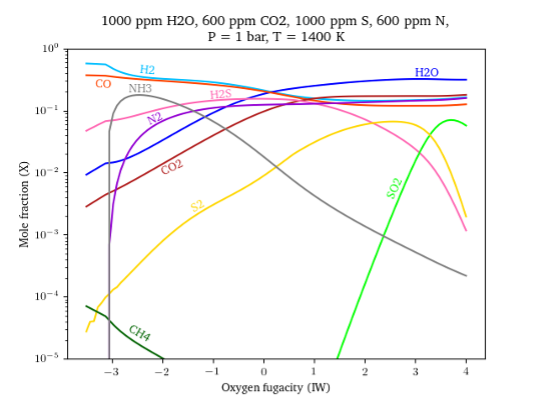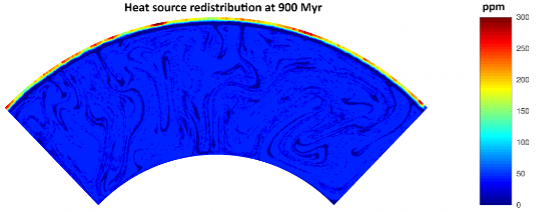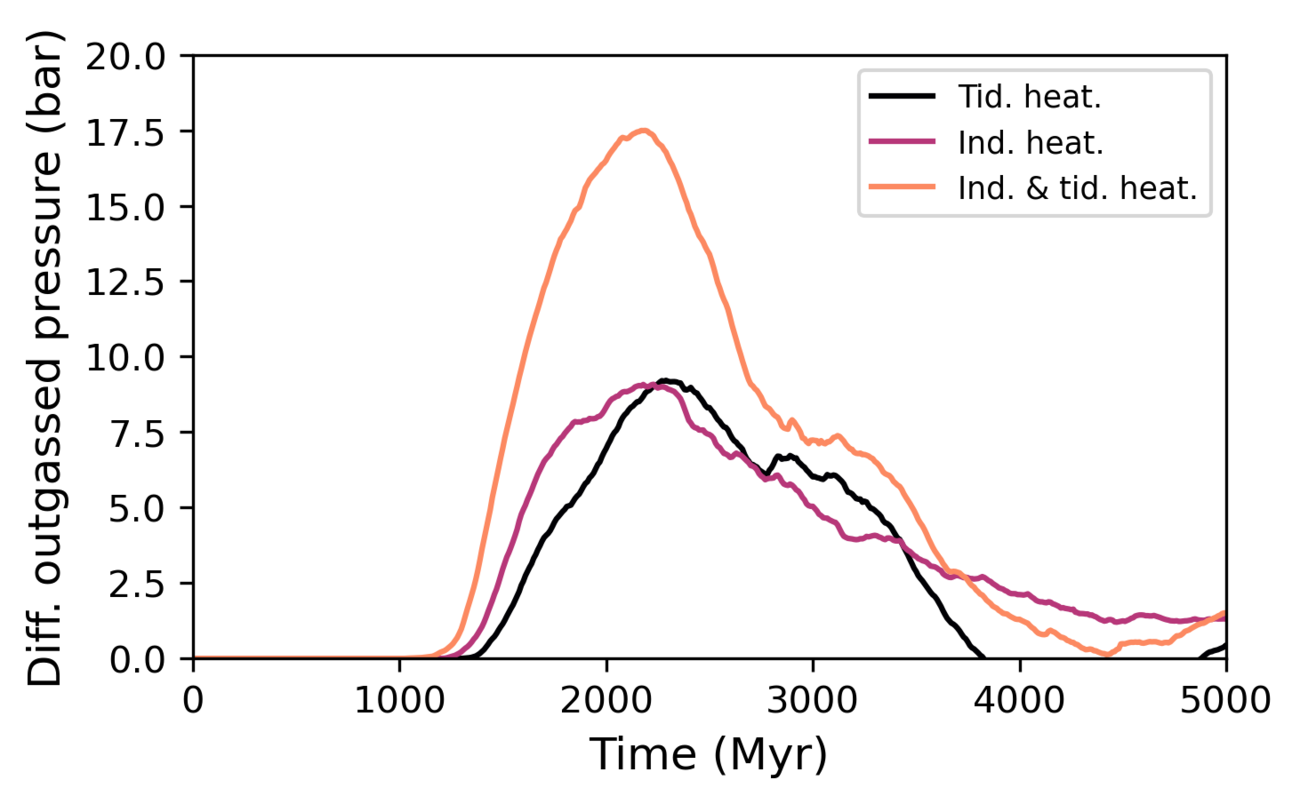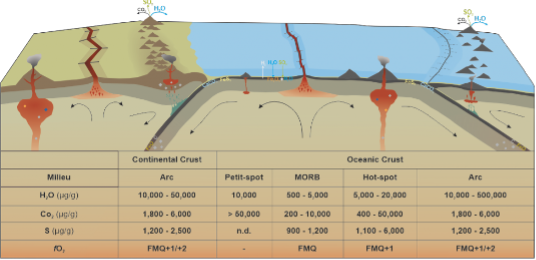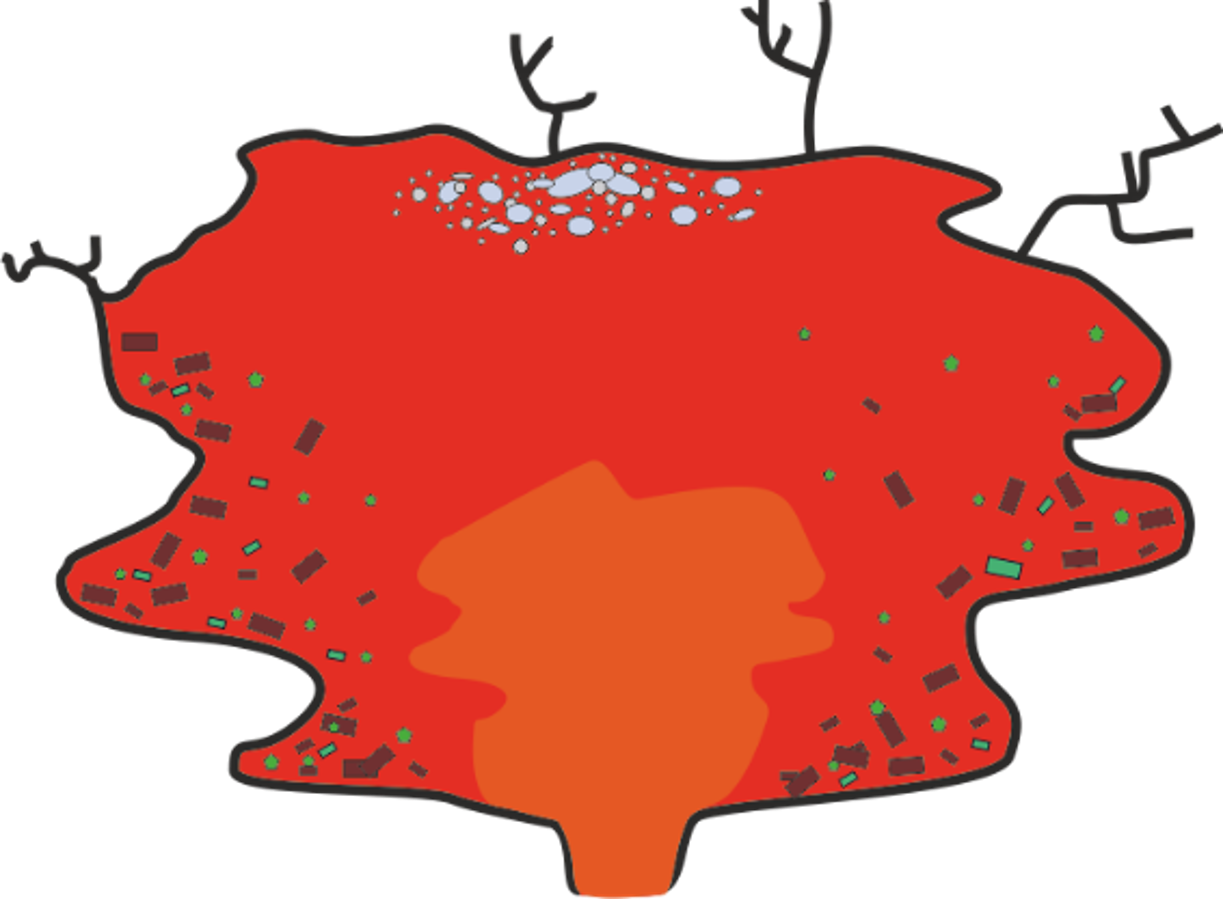Department of Earth Sciences
Service Navigation
Chemical volatile gas speciation and atmospheric evolution on terrestrial planets
Subsequently to the magma ocean state, secondary atmospheres build up via early volcanic degassing of planetary interiors. The terrestrial planets Venus, Earth and Mars are believed to have originated from similar source material but reveal different present-day atmospheric compositions, pressures and temperatures. To investigate how such diverse atmospheres emerge, we have developed a model that allows us to compute the molar fractions of gases involved in volcanic degassing in the C-H-O-N-S system by using the mass balance method and Gibbs energy minimization. The model takes into account pressure, temperature, oxygen fugacity, melt composition and the effect of volatile species on each other.
We find that all the parameters mentioned above have a significant effect on the molar composition of the released gases and that hence varying parameters like planet mass, atmospheric pressure, tectonic regime, volatile budget or the abundance of heat sources can lead to significantly different atmospheric compositions and degassing rates.
Formation and evolution of crust on early Earth
After the magma ocean phase 4.5 Gyr ago, the radioactive elements K, Th, and U became the most important heat producing elements on Earth. Since their presence highly affect the heat budget of Earth and other terrestrial planets over large time spans, we have to trace their redistribution behavior in the mantle and crust as precisely as possible. In this study, we model partition coefficients depending on pressure, temperature, and melt composition based on Blundy and Wood (2003) by further developing their partitioning model and parameterize it to higher pressure ranges. The resulting code will be implemented into the global mantle convection code CHIC, which will help to determine the melting behavior and primitive crust formation rates of Earth and Mars. Together with an added mineralogical database we will explore the compositional mantle development. In addition, re-melting and differentiation processes of basaltic crust to more felsic material will mark the beginning of continental crust formation. With this, the project aims to create a statistical overview of crustal formation and recycling mechanisms, which will help to improve our understanding of global crustal development processes.
Interior heating and outgassing of Proxima Centauri b: Identifying critical parameters
Since the discovery of a potentially low-mass exoplanet around our nearest neighbour star Proxima Centauri, several works have investigated the likelihood of a shielding atmosphere and therefore the potential surface habitability of Proxima Cen b. However, outgassing processes are influenced by several different (unknown) factors such as the actual planet mass, mantle and core composition, and different heating mechanisms in the interior.
We aim to identify the critical parameters that influence the mantle and surface evolution of the planet over time, as well as to potentially constrain the time-dependent input of volatiles from mantle into the atmosphere.
To study the coupled star–planet evolution, we analysed the heating produced in the interior of Proxima Cen b due to induction heating, which strongly varies with both depth and latitude. We calculated different rotation evolutionary tracks for Proxima Centauri and investigated the change in its rotation period and magnetic field strength. Unlike the Sun, Proxima Centauri possesses a very strong magnetic field of at least a few hundred Gauss, which was likely even stronger in the past. We applied an interior structure model for varying planet masses (derived from the unknown inclination of observation of the Proxima Centauri system) and iron weight fractions, that is, different core sizes, in the range of observed Fe-Mg variations in the stellar spectrum. We used a mantle convection model to study the thermal evolution and outgassing efficiency of Proxima Cen b. For unknown planetary parameters such as initial conditions, we chose randomly selected values. We took heating in the interior due to variable radioactive heat sources and induction heating into account and compared the heating efficiency to tidal heating.
Our results show that induction heating may have been significant in the past, leading to local temperature increases of several hundreds of Kelvin. This early heating leads to an earlier depletion of the interior and volatile outgassing compared to if the planet had not been subject to induction heating. We show that induction heating has an impact comparable to tidal heating when assuming latest estimates on its eccentricity. Furthermore, we find that the planet mass (linked to the planetary orbital inclination) has a first-order influence on the efficiency of outgassing from the interior.
Global volatile cycles on early Earth
The understanding of volatile cycles on Earth is essential as they have a huge influence on mantle and surface processes. Outgassing from the interior strongly affects the chemical composition of the atmosphere and the oceans. Volatiles in the mantle influence the rheology, trigger melting and lead to ore deposit formation. At the surface, weathering and recycling acts as a huge carbon sink and has a profound effect on the global climate. The aim of this study is the simulation of these volatile cycles on early Earth. We focus mainly on greenhouse gas forming H-C-N as well as on Xe, Ar and Ne as trace elements. For this approach, we enhance a thermo-chemical model of the lithosphere and deeper mantle. The cycles operate from the interior to the surface and back via outgassing, condensation and crustal recycling. One of the main questions of this project is through which mechanisms volatiles could be recycled into the mantle before the on-set of plate tectonics as it operates today (e.g., by sagduction, delamination, erosion).
Volatile release from intrusive magma systems
In this subproject we calculate the volatile release of magma bodies emplaced at different depths within the lithosphere. The contribution of outgassing to the build-up and composition of the atmosphere on early Earth is crucial, not least for the emergence and evolution of life, since it is one of the major volatile sources. While studies of extrusive outgassing exist in the literature, intrusive degassing is mainly neglected.
Due to cooling, nominally mafic minerals crystallize out and the remaining melt is enriched with incompatible elements and molecules, including volatiles such as H2O and CO2. They accumulate in the melt until the particular saturation level is exceeded and a volatile phase forms. The volatiles released from the magma body are buoyant and may ascent due to already existing cracks and fissures or may even create new cracks. We compute the amount of H2O and CO2 degassing during crystallization for different pressures. Therefore, we take into account the solubility, the initial volatile content, the pressure and temperature, the specific partition coefficient and the oxygen fugacity. Finally, we benchmark our results with the geological record and compare them with the already existing simulated data for extrusive outgassing to determine the possible impact of intrusive degassing.
